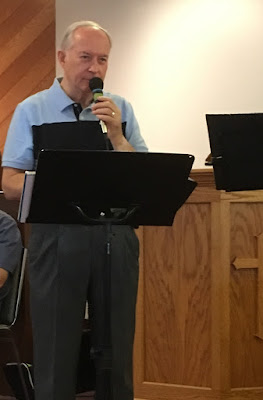FOUR FACES
The Book of Revelation is a book of symbolism. One of these symbolic elements is found in chapter 4 where it states that:
…around the throne, were four living creatures
full of eyes in front and in back.
The first living creature was like a lion,
the second living creature like a calf*,
and the third living creature had a face like a man,
and the fourth was like a flying eagle.
(Revelation 4:6-7)
These living creatures, if one compares them to Ezekiel 1 and 10, are apparently cherubim, spectacular angelic beings around God’s throne. But what exactly does the appearance of these angels represent?
There have been many interpretations put forward over the years in an attempt to answer this question. Some have said that the four faces represent the four elements, others the cardinal virtues, the powers of the human soul, the orders of churchmen, the principal angels, etc. In reality, however, none of these are really satisfactory.
One other explanation is that the faces are representative of the four apostles. In fact on many of the great cathedrals there are statures of the apostles with a representative “face” associated. For example, Matthew is often associated with the lion. Mark with the calf or ox, Luke with the man, and John with the eagle. They are apparently represented as such because of the type of Gospel that each wrote.
Matthew for instance, wrote primarily to the Jewish nation and emphasized Jesus as the “King of the Jews” (Matthew 27:29). This also refers back to Genesis where it states that: “…Judah is a lion’s whelp…” (Genesis 49:9) and as well the symbol of Judah was a lion. As a lion is often referred to as the ‘king of the beasts’, and Matthew wrote about the kingship of Christ; we can therefore see the relationship of the lion with the apostle Matthew
In like manner, Mark represented Christ primarily as a servant who was there to do what He could for the people, in like manner of a calf/ox who was, and still is, a servile beast. The ox was also the symbol of Ephraim, the son of Joseph who was humbled, and who rose to a position of power and influence in Egypt during the height of its power.
Luke in contrast, was a physician who emphasized the human and healing nature of Christ and therefore represented by the face of man. He represented Christ as the “Son of Man” more than any other of the Apostles indicating that Christ was 100% human during His time on earth.
Finally, John expounded more on the divine nature of Jesus as the Son of God. “And the word was made flesh, and dwelt among us, and we beheld His glory, the glory as of the only begotten of the Father…” (John 1:14). The eagle, who lives and flies higher than most other birds, is often associated with the heavens and God’s divine nature and glory.
Thus, the Apostles are associated with the living creatures in Revelation but more important still is the fact that the faces on these living creatures represent the four main characteristics of Christ Himself.
- His Kingship as “King of Kings and Lord of Lords” (Revelation 19:16)
- His servant’s heart which comes from the fact that He “did not come to be served, but to serve” (Matthew 20:28)
- His humanity because “…the Son of Man did not come to destroy men’s lives but to save them…” (Luke 9:56)
- His divinity - “I am the way, the truth, and the life. No one comes to the Father except through Me” (John 14:6)
It appears to me that the four faces described on the living creatures in Revelation really represent the four primary characteristics of Christ.
At the very least, it is something to think about.
* an ox in some translations


No comments:
Post a Comment